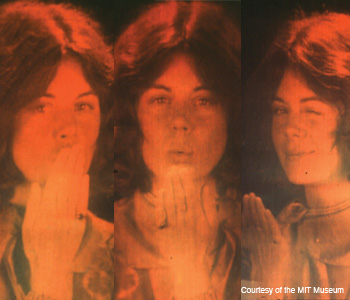Feature
Holography and the Laser
The invention of the hologram actually predates that of the laser, but they both came of age during the technological boom of the 1960s. Holography has not matched the growth of some laser applications, but if you look in your pocket or purse, you will find it is alive and well.
 Mini Kiss II, Lloyd G. Cross, 1975. Holographic stereogram of Pam Brazier. When the viewer stands to the left of the hologram, her right profile is visible. As the viewer moves from left to right, she blows a kiss and then winks. When the viewer reaches the right side of the hologram, her left profile is visible.
Mini Kiss II, Lloyd G. Cross, 1975. Holographic stereogram of Pam Brazier. When the viewer stands to the left of the hologram, her right profile is visible. As the viewer moves from left to right, she blows a kiss and then winks. When the viewer reaches the right side of the hologram, her left profile is visible.
Although holography has long been closely identified with lasers, Dennis Gabor made the first hologram a dozen years before Theodore Maiman made the first laser. After several years of experiments failed to make holography practical, Gabor largely abandoned the field, and most work had ceased by the time of Maiman's laser. Then, the development of continuous wave lasers gave holography the coherent light source it needed, allowing Emmett Leith and Juris Upatnieks to reinvent and successfully launch holography.
…Log in or become a member to view the full text of this article.
This article may be available for purchase via the search at Optica Publishing Group.
Optica Members get the full text of Optics & Photonics News, plus a variety of other member benefits.
